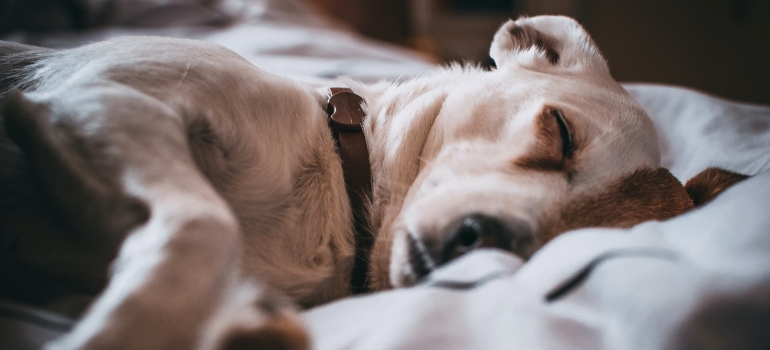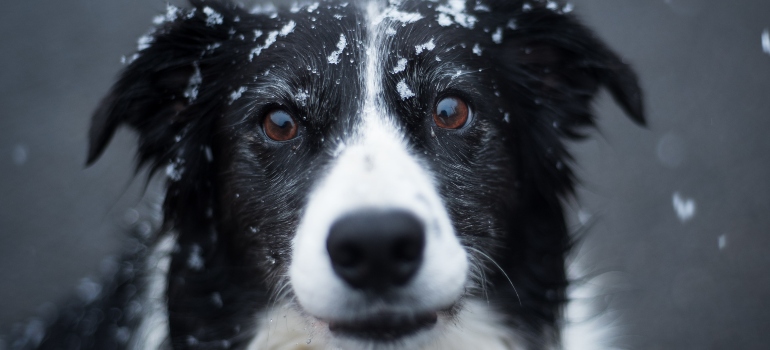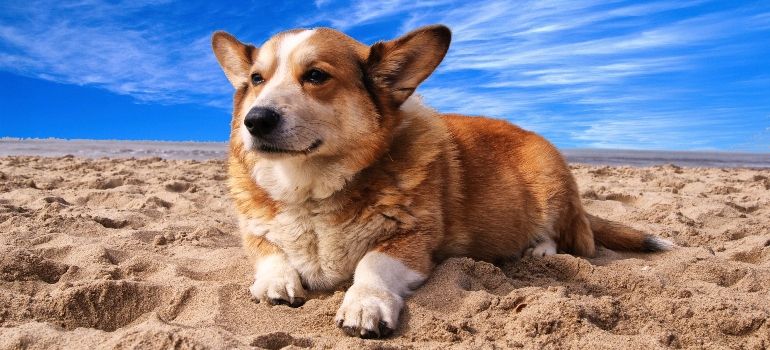Moving can be a very fun and enjoyable process, but with pets involved it can be a bit complicated. They are creatures of habit, so moving pets to different climates can be tricky. It’s nothing impossible of course, you just have to know how to help them acclimate. Having them change their surroundings entirely is already confusing enough as it is. Add the weather factor into it when moving from state to state and it turns into a whole different ball game. Thankfully, our company has plenty of experience regarding this topic, so we will most definitely help you. We’ll share with you the best tips and tricks you should know when moving your pets to different states and climates. Let’s get straight into it.
What to do in case of moving with your pets to colder climates?
Relocating pets to colder climates can be a stressful ordeal as well. You should still ensure they have everything they need to feel warm and pleasant throughout the entire moving process as well as when you arrive. So, what should you do?
Make sure their sleeping space is extra warm
If you are moving from Texas to New York, let’s say, your dog will definitely feel it, especially in winter. For instance, the average winter low in NY is 26.1 with 25.3 inches of snow, whereas in Houston the average low is 43.4 with zero snow! If they’ve never seen snow before they will be intrigued by it, but they may catch a cold very quickly. Therefore, make sure you dry them off as soon as you come home and have their sleeping place extra warm, to fight off any potential cold.

Get your pets some winter clothes
Depending on the length and thickness of your pet’s coat, they may or may not take the cold in a good way. If they are smaller in size and generally don’t have a thick coat, it’s important to get them appropriate winter clothes. Get them some quality coats, bundles, or hoodies to keep them warm. Not just outside, but also inside the house. They may take some time to get used to the cold, so make it easy for them as much as you can. Moving pets to different climates can be a challenging thing for them, but with your help, they will quickly adapt.
Compensate their outdoor time with activities and fun inside the house
As your pets are getting used to the cold, you will most likely have to limit their outdoor time. When that is the case, you will still have to make sure they spend their energy in some other way. They may not be able to run around outside as much, but you can compensate for that at home. They will leave their short trips from the dog park with plenty of energy left, so continue spending time with them indoors. Play some fun games like tug of war, fetch, or anything else that will make them excited and move their bodies. They simply have to let that energy out in some way if you want them to be happy and content.

How to help pets acclimate when relocating to warmer climates?
If you are moving with pets to a very warm state like Florida, and you think all you have to do is pack and hire reliable long distance movers Florida has to offer, think again! You have to make sure your pets are gradually getting used to the warmer climate during your move and after you arrive. Let’s see what are the best things you can do for them.
Most importantly help them stay hydrated
This should be your number one priority. While you are moving, make sure you always have a bottle of water at hand. Relocating pets to warmer climates can be a challenging thing for them. Due to the rise in humidity, they will have to drink more water than usual. Once you arrive and settle in, ensure your pet has access to clean and fresh water 24/7. They will have the desire to drink more water naturally so it’s imperative you enable that. Not just because of hydration itself, but also because it will be a stressful thing for them to bear. Once they acclimate after a certain period of time, they’ll be good as new!
Limit their sun exposure at the beginning of your stay
While they are still getting used to their new surroundings and climate after moving, stay out of the sun. That level of heat will be new to them, and it may physically shock them. Gradually increase their stay in the sun, but always keep a water bottle with you. Take shorter walks and see how they react. Once they are okay with the new climate, you can increase your outdoor activities back to normal.
Protect them from insects
You will find a lot more bugs and insects in warmer climates. Avoid going for walks at dusk or dawn, as that’s when mosquitos and other pests are most active. Make sure your house has safety nets against them, so you or your pets don’t suffer too much because of them. Add another layer of protection for your pets by getting bug sprays designed for pets. They will be immensely grateful!

Moving pets to different climates can be challenging, but not impossible!
If you are moving from Texas to Virginia, or some other states with similar climates, you won’t have to do as much. They will acclimate quickly, but if you are moving to places with drastically different temperatures, humidity, and precipitation, then you must take the steps above. But don’t worry too much! Moving pets to different climates can be a fun and exciting thing for them too, not just for you! Share that experience with them and it will make your bond grow even stronger than before.
